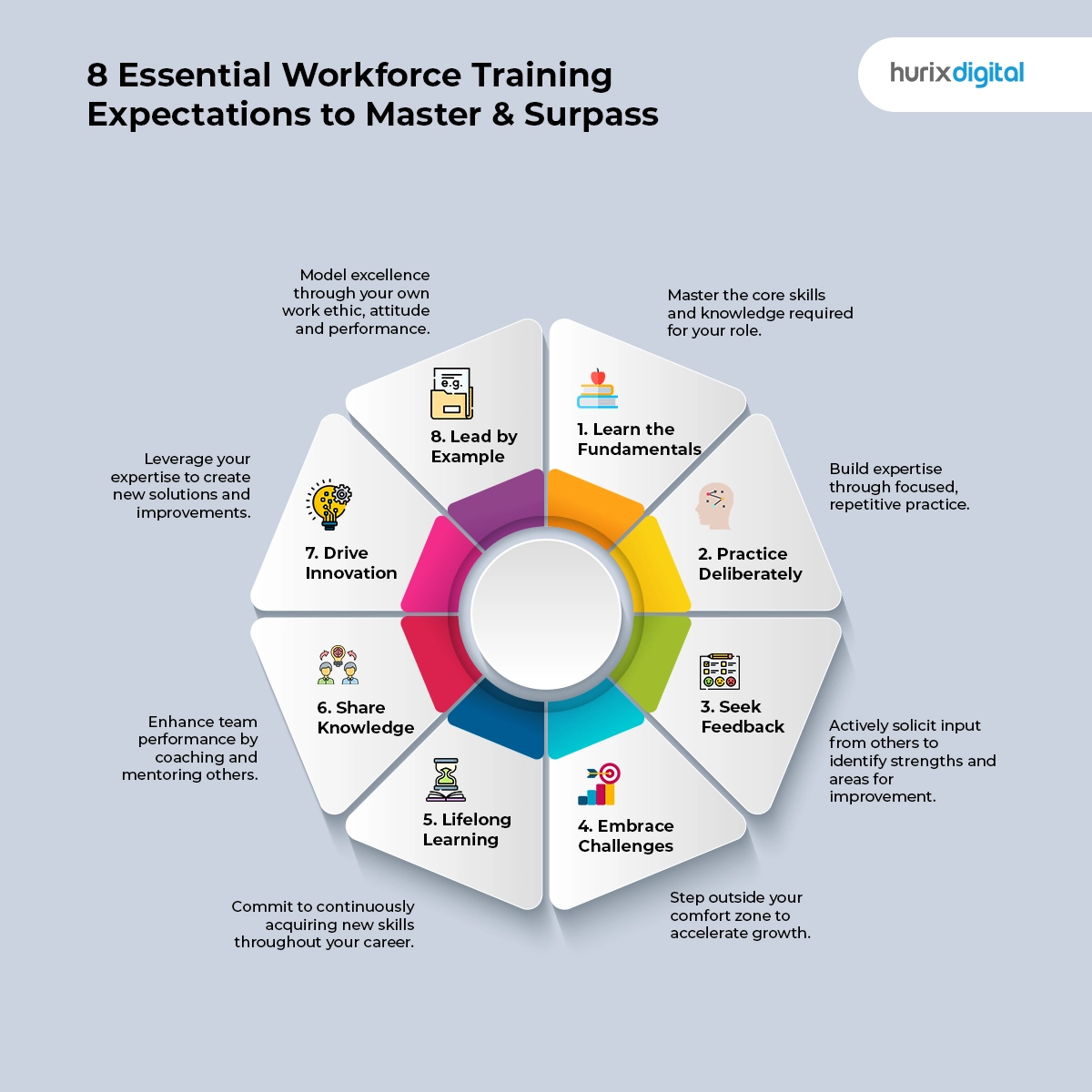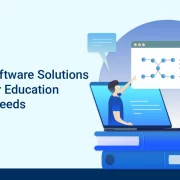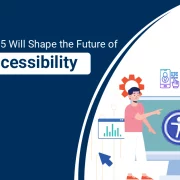Workforce training is a key aspect of any successful organization. This infographic outlines 8 essential expectations for employees to master in order to excel. Adhering to the workforce training best practices will lead to positive outcomes for both employees and employers alike.
To incorporate these best practices into your organization, Contact Hurix Digital now.

Moving Beyond Traditional Methods
Organizations should embrace innovative techniques like microlearning and gamified sessions as these engaging formats encourage employees to take ownership of their professional development, ensuring they retain new information and apply it in real-world scenarios.
The Power of Feedback Loops
Effective Workforce Training also prioritizes regular feedback. Constructive criticism and supportive guidance help identify skill gaps, celebrate milestones, and set clear expectations for improvement. This process builds confidence and fosters a sense of accountability across the entire team, ultimately driving better performance.
Aligning Training with Organizational Goals
To maximize results, it’s crucial to align Workforce Training initiatives with broader company objectives. Regularly revisiting goals, assessing progress, and adjusting programs accordingly ensures each learning opportunity remains relevant. Leaders play a key role in this process by modeling a commitment to self-improvement and encouraging employees to do the same.
Strategies for Successful Implementation
-
Integrate real-life scenarios that mirror everyday challenges.
-
Encourage peer-to-peer mentoring to facilitate knowledge sharing.
-
Offer flexible learning paths to accommodate diverse learning styles.
-
Use data-driven insights to measure the impact of each training session.
Fostering a Future-Ready Team
By embracing these principles, companies can create a robust Workforce Training ecosystem that supports both individual career growth and organizational success. A well-prepared workforce is better positioned to innovate, adapt, and excel in an increasingly competitive marketplace. Through ongoing development and thoughtful program design, your organization can cultivate a culture of learning that benefits everyone involved.



